Restorative Justice “RJ” at EMS
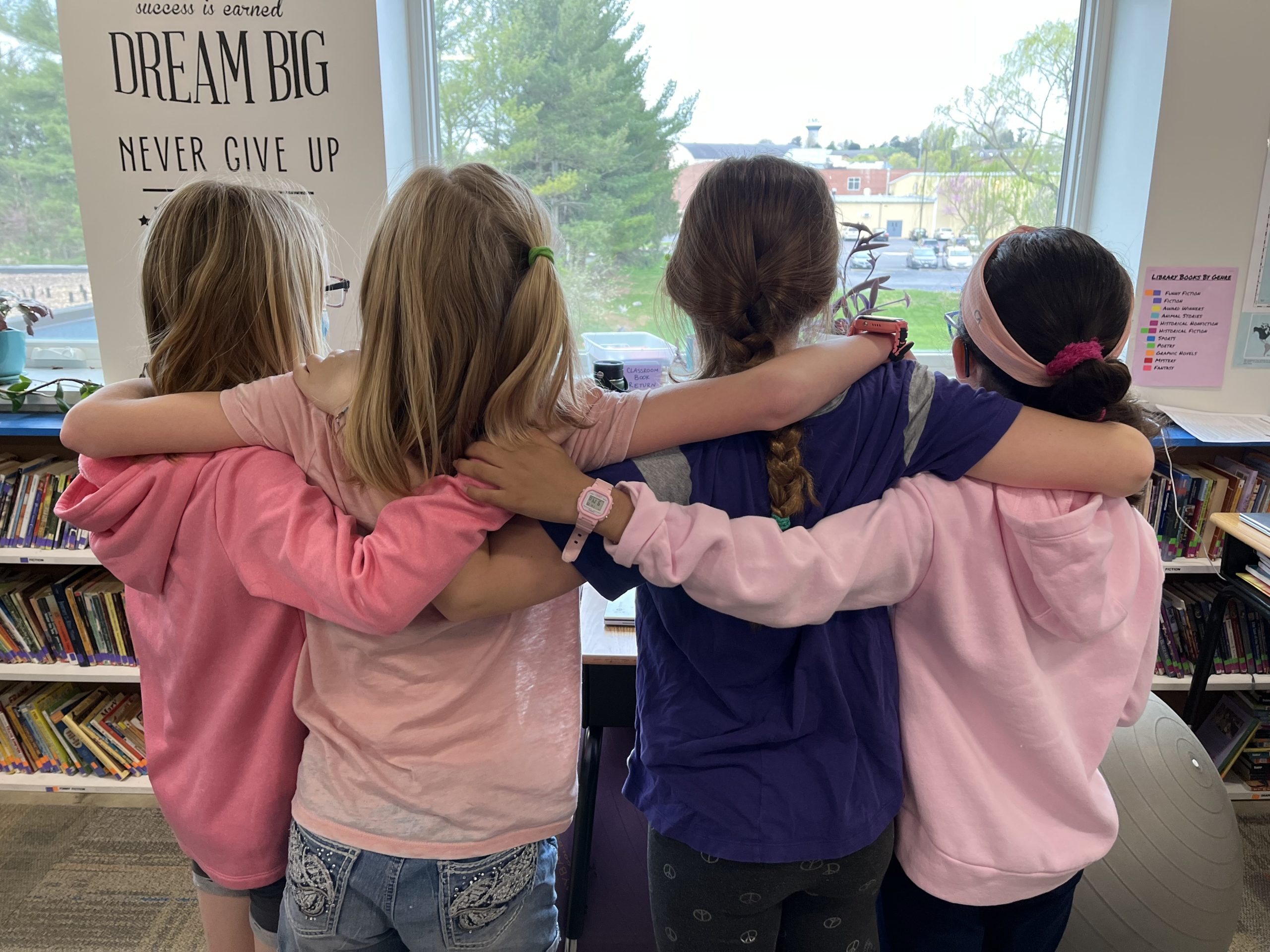
 I am grateful for the 362 K-12 students who were part of our learning community during the 2021-22 school year.
I am grateful for the 362 K-12 students who were part of our learning community during the 2021-22 school year.
When that many students come together, there are inevitably times of conflict and behavior that cause harm to relationships. As teachers and administrators, we have a choice at times like this. We can choose a punitive response. Or, a restorative approach.
We choose as a school to invest the time and energy it takes to use restorative practices when relationships are harmed. This work is not easy. We don’t always get it right. But each day I see our teachers and principals take time to learn about RJ practices, model and teach Christ-like ways of addressing hurt between students and others. These lessons help us fulfill our mission to call students to faith in Jesus Christ and pursue compassionate service in the world. — Paul Leaman, head of school.
RJ at EMS
Using restorative practices involves creating space for people to listen fully. Sometimes that is a conversation between two or more students, facilitated by a teacher, counselor, or principal. All parties involved agree to the process before starting. In larger groups, a circle process provides the opportunity for everyone to speak and listen. The speaker holds a “talking piece,” such as a stone or a ball, and passes it to the next person when they are done. There’s always the option to pass.
Eastern Mennonite Elementary School was founded in 2005 with an RJ lens woven into the fabric of this new school culture. That mindset has gained momentum in our school, spreading into the “DNA” of our middle and high school. Currently, restorative practices are gaining momentum not only at EMS, but in schools nationwide.
Teachers Heidi Byler (grade 3), Bethany Gibbs (grade 4), and Erika Gascho (grade 5) created materials to explain restorative justice for school parents as part of an assignment in a Restorative Justice in Education class at Eastern Mennonite University.
What does restorative mean?
In students’ words…
- To fix things.
- To build trust back.
- To find a solution.
- To put the relationship back together.
How to build relationships
Tips from students…
- Include others.
- Try to work things out.
- Have fun together.
- Be honest. Trust each other.
- Be able to share personal things.
- Help each other. Share and be kind.
- Spend time together.
- Talk; get to know each other.
- Learn each others’ likes and dislikes.
- Be there for each other, and stand up for each other.
- Be patient; allow space when needed.
Senior Class Culture Shift
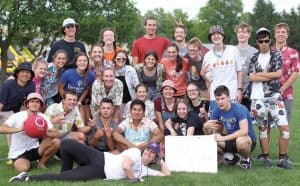
Class of ’22 after kick ball at the annual Beach Day tournament.
Jodi Hertzler and Shannon Roth, senior class sponsors, looked at all of the traditions and practices of the class through an RJ lens, resulting in changes that built up the class culture and connections.
Examples:
- Students chose class officers in a way that felt less like a popularity contest and focused more on the gifts of each prospective leader.
- The entire class did a community service project together.
- Class meetings used a circle process if there was a conflict or situation that needed space for everyone to share and be heard.
- During class meetings, several students heard affirmations written earlier in the week for them by classmates, teachers, and staff.
- The final senior chapel invited each student to share a favorite memory from their time at EMS, offer advice to returning students, and share something about future plans.
“Over the year, we saw the class grow closer,” says Roth. “We have worked with the senior class for seven years together, and these RJ practices gave us new practical tools.”
See Ms. Hertzler and Ms. Roth’s message for the class of ’22 during the final chapel of the year on Youtube.
A 5th Grade Circle
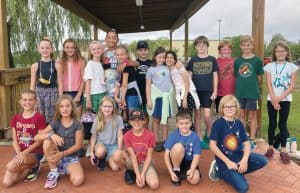
Class of ’29 (fifth grade in spring 2022) at the elementary school bridge.
“A class with a lot of drama.” That’s how the fifth grade class (pictured, left) described themselves earlier this year. But, during a class circle process – initiated and facilitated by the students – they passed a talking piece and listened carefully. At the end, they created a list of hurtful words they sometimes hear from classmates, and signed an agreement with alternative words, committing to do better and do less harm.



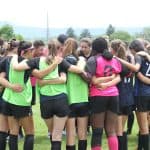
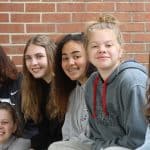

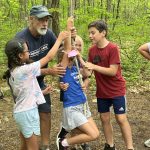
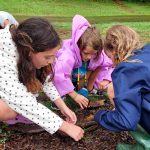


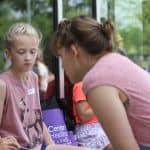

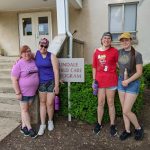
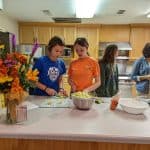
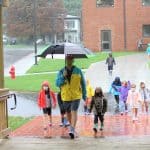
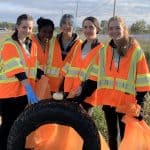

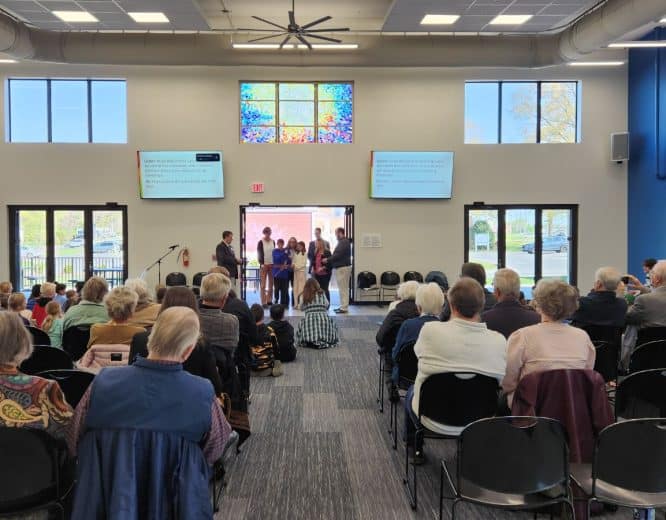
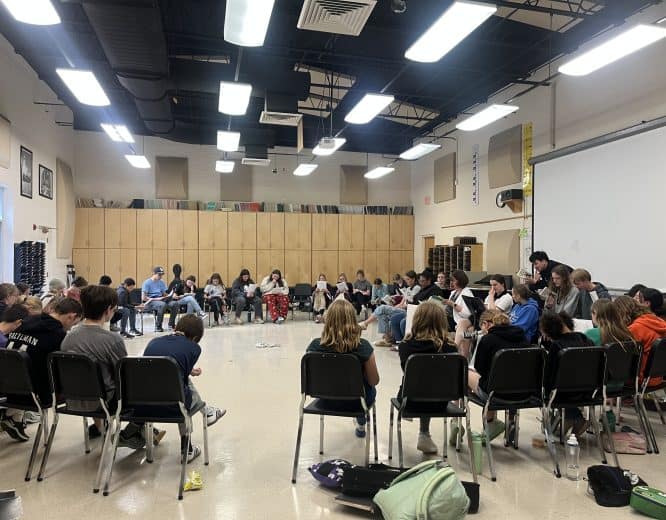
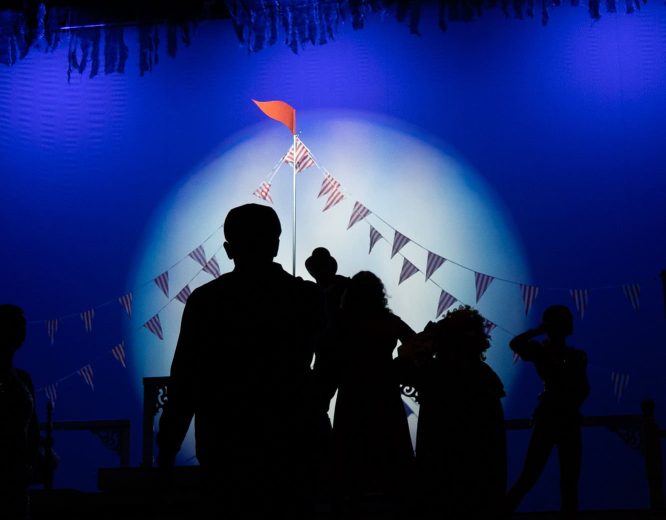
So happy to see this happening! In our devisive times in this country, it is a critically important skill to have in their minds and hearts!!